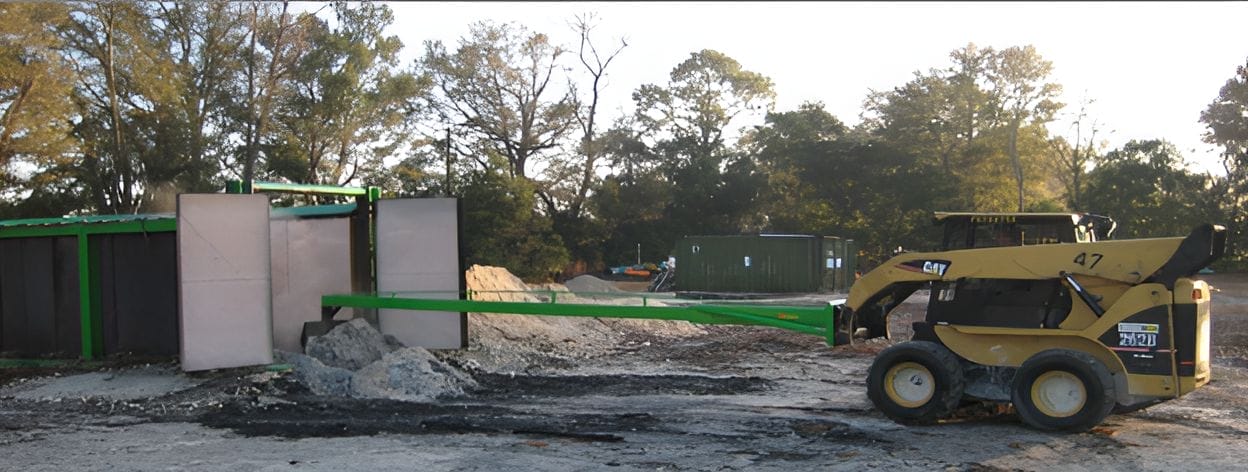From Wood Waste to Biochar: A Practical Guide
Traditionally, there have been two main ways to deal with wood waste. One is to chip it and haul it to landfills—a process that eats up time and budget. The other is open burning, which may look simple, but sends smoke into surrounding areas, contributes to air pollution, and raises the risk of wildfires, especially during dry seasons. Another factor that often goes unnoticed: when wood waste ends up in landfills, it breaks down slowly and releases methane—a greenhouse gas many times more potent than carbon dioxide.
Every year in the U.S., more than 70 million tons of wood waste is generated. Half of that ends up in landfills or in unmanaged slash piles. The piles can sit for years due to treatment backlogs, drying out until they become dangerously flammable.
This guide looks at managing wood waste—and how Air Burners’ technology offers a practical, on-site approach that helps reduce its environmental impact from day one.
Beyond the Burn Pile: How Smart Companies Are Turning Wood Waste into Gold
Let’s flip the script on waste management. Instead of dealing with slow, messy disposal that creates problems down the road, Air Burners eliminate wood waste on-site and at scale.
Air Burners make this transformation possible on a real-world scale, taking what used to be a headache-inducing disposal problem and turning it into soil enriching ash and biochar, cutting emissions, and even chipping away at climate change in its own small but significant way. If your organization is constantly dealing with mountains of wood waste, Air Burners are worth a serious look; they might just change how you think about waste entirely.
What is Biochar?
Biochar is what’s left when organic material like wood waste is burned at high temperatures with limited oxygen. In our standard FireBox, biochar is produced after the burn cycle by covering the FireBox with about ten inches of dirt. This step cuts off oxygen and triggers pyrolysis—a process that drives off gases while leaving behind a lightweight, porous carbon structure.
Biochar isn’t new technology. It has been used for thousands of years to enrich soil, and research continues to demonstrate its value:
- Enhances soil’s ability to hold nutrients and water
- Reduces runoff and erosion
- Lowers the need for chemical fertilizers
- Improves drought resilience
Since October 2022, the NRCS has officially included a “Soil Carbon Amendment” practice (CPS 808, later CPS 336 effective October 2023) under EQIP. This program provides cost-share funding to apply biochar on agricultural and forestry lands.

Industries That Can Benefit
A lot of industries have found ways to make Air Burners part of their operations:
- Construction & demolition: turning wood debris into something useful.
- Forestry & land clearing: managing slash, reducing wildfire fuel loads.
- Agriculture: improving soils while disposing of orchard trimmings or other waste.
- Municipal & disaster cleanup: quickly dealing with storm debris without clogging landfills.
Why Choose Air Burners for Biochar Production?
- Burns faster than open piles—40x faster.
- Self-contained, mobile, and easy to deploy.
- Works in remote locations without extra infrastructure.
- Cuts hauling emissions by eliminating transport.
- Reduces volume significantly while producing ash and biochar instead of landfill waste.
- Reduces smoke and particulate emissions dramatically.
- Either zero or small need for fuel.
- Cuts transportation and disposal fees.
- Can help meet local emission or landfill diversion requirements.

How Air Burners Produce Biochar
Here’s a simplified look at how the process works in a standard Air Burner system:
- Collecting the Wood Waste
Air Burners let you skip the long trips and allow you to eliminate the wood waste on-site, where it is generated
- Loading the Firebox
To get started, use your dryest wood. Think of this as building a campfire. Light it up and wait a few minutes for a hot fire to build.
Once the fire is hot, start up your Air Burner. When the engine is fully up to speed and running, a high-velocity stream of air is directed across the top of the FireBox, creating an “air lid” over the FireBox. The lid traps the particles of smoke under the air curtain for fractions of a second causing the particles to reburn. This secondary burn reduces the smoke particle size so small it generally looks like heat waves coming out of the FireBox. The whole purpose of the air curtain is to create the secondary burn chamber, and the extra air helps oxygenate the fire to burn as fast as possible.
- High-Temperature Combustion
Temperatures inside the FireBox exceed 1,800°F (around 980°C).
Open piles smolder slowly and dirty. Air Burners burn hot and clean.

Collecting the Biochar: Crews rake out the leftover ash and biochar the morning before burning on day 2. This isn’t useless ash. It’s lightweight, carbon-rich, and holds nutrients and minerals. It can be used in:
- Soil restoration.
- Erosion control projects.
- Stormwater filtration.
- Carbon sequestration programs.
It turns a disposal headache into a potentially valuable resource.
Conclusion
Air Burners are changing the game. Instead of treating wood waste like a burden you need to get rid of, you can transform it right on-site into biochar—something that has value. You’re cutting emissions, slashing those expensive hauling costs, and creating a saleable by-product that makes soil healthier all in one go. It’s the kind of solution that makes you wonder why we’ve been doing things the hard way for so long. If you’re tired of wrestling with wood waste disposal and looking for an approach that makes sense, Air Burners might be exactly what you’ve been searching for.
Learn More
